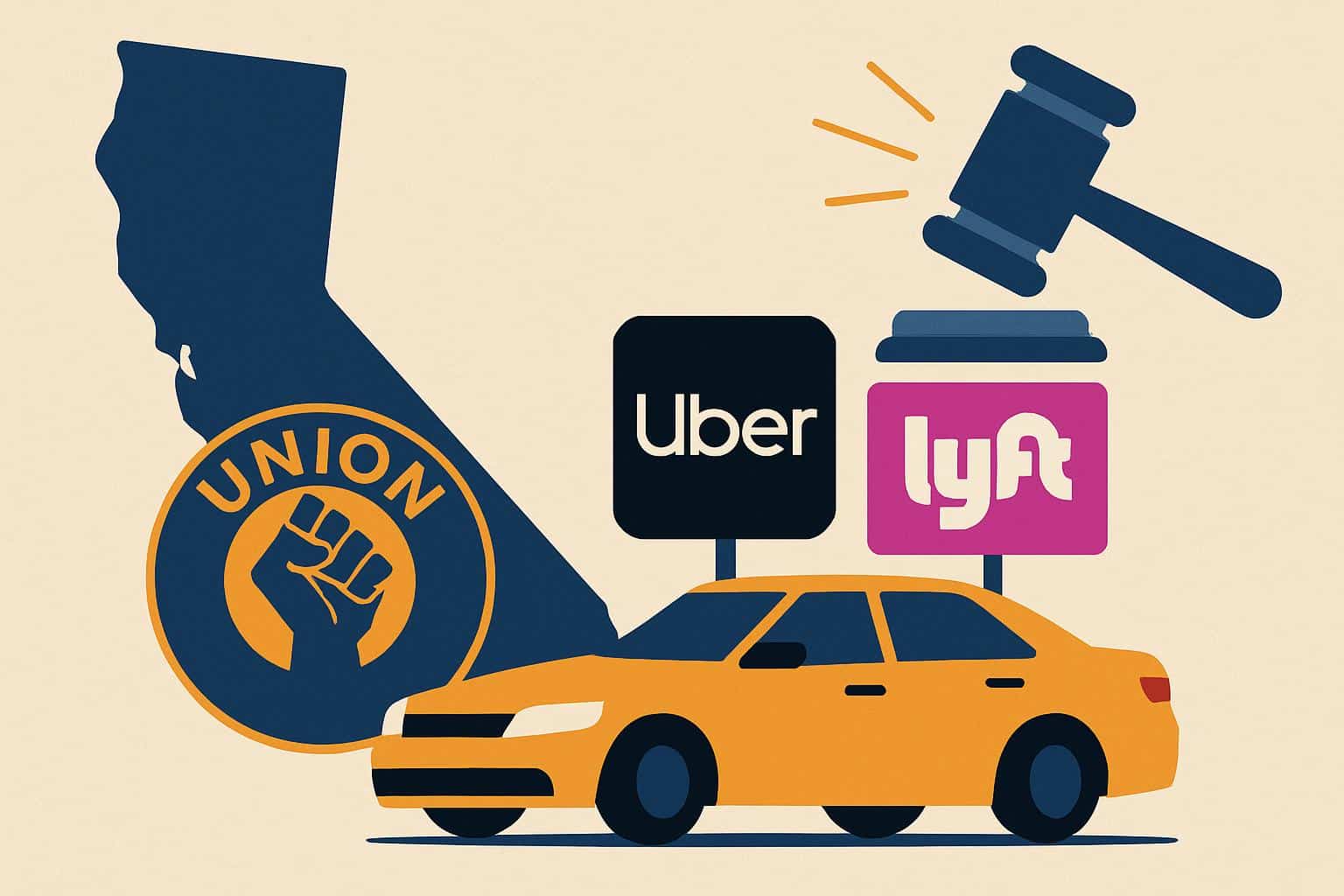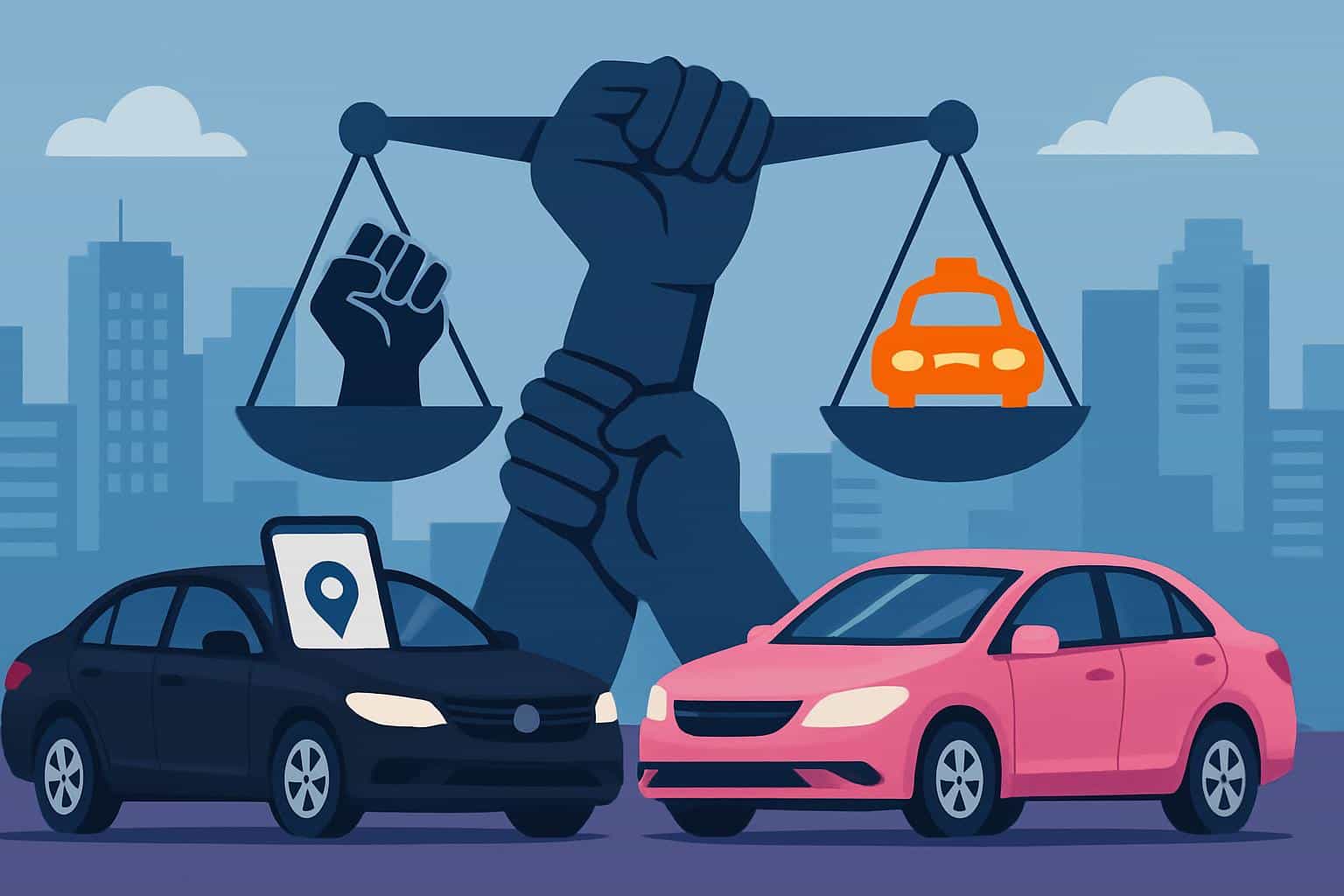California has rewritten the rules of the gig economy with a bill signed by Governor Gavin Newsom that, while perhaps passing onerous new legal burdens onto companies like Uber and Lyft, had some in Silicon Valley breathing a sigh of relief. The measure, a component of a larger accord between lawmakers, labor organizations and ride-hailing services, is expected to apply to more than 800,000 app-based drivers in the state, according to reporting published by The Associated Press.
(The deal couples collective bargaining rights for drivers with a separate measure altering insurance requirements for ride-hailing platforms, as part of a trade-off meant to balance worker leverage against cost pressures on platforms. Uber has called the package a compromise that reduces costs for riders while enhancing drivers’ voices, a sentiment echoed by the company’s policy lead in comments to the AP. Driver groups and labor activists, who have long condemned pay volatility and deactivation policies, heralded it as a hard-fought entry point to representation.)

What the new California law changes for ride-hailing drivers
The measure creates an avenue for app-based ride-hailing drivers, who are classified as contractors, to choose representation and bargain collectively over industry standards. State regulators will set the specifics, but the framework is likely to include rules about how a representative is chosen and how bargaining units are defined, as well as negotiation of agreements that extend across ride-hailing platforms in California.
Among the issues they’ll likely discuss are:
- Base pay formulas.
- Minimum per-mile and per-minute rates.
- Transparency around algorithmic dispatch and pricing so drivers know the details before accepting a job.
- Access to health stipends requiring independent contractors from food delivery services like Uber Eats to receive $26 an hour (including expenses and health care) for every hour “logged in.”
- Safety protections, including how tips are handled in the app.
- Access to restrooms that workers can use during their shifts at pickup locations.
- Due process for deactivations so drivers understand why and can appeal.
The Washington state model contains elements in common, where lawmakers built a system that instituted pay floors and created a driver resource center to resolve conflicts and work through deactivations.
How California’s plan departs from federal labor rules
Under federal law, independent contractors typically do not have the right to unionize and engage in collective bargaining, since the National Labor Relations Act applies to employees. Some states have already started to experiment with alternatives that establish industry-specific bargaining mechanisms for contractors, which aim to work around federal preemption while also providing a vehicle for worker representation.
Labor law experts say meaningful state oversight is the key to making sure these frameworks stay within antitrust boundaries, a principle known legally as state-action immunity. Washington’s ride-hailing law and New York City’s app-based driver standards provide a road map for states and localities to establish pay and process rules while bypassing the need to modify worker classification.

How the new law fits alongside California’s Prop 22
California’s Proposition 22 classified app-based drivers as contractors and offered them some — but not many — benefits, such as a guaranteed earnings floor for time spent engaged, an expense stipend per mile, occupational accident insurance, and health care contributions tied to hours driven. The California Supreme Court has refused to hear the case on Prop 22, which means the contractor model will remain in place.
That labor classification is not changed by the new union law. Instead, it builds collective bargaining rights on top of the Prop 22 model so that statewide standards would be worked out between drivers and companies. How exactly it will work in practice will depend on rulemaking by the Labor and Workforce Development Agency and other state departments, which will determine things like election rules, certification thresholds, and bargaining timelines.
Industry impacts, driver pay, and potential rider costs
For platforms, the more immediate question is price. Unions could mandate pay floors and increase required due process procedures for deactivation, driving up costs. The insurance changes in the larger package are intended to help alleviate some of those pressures. Insurers and transportation researchers have long observed that commercial auto insurance is among the greatest overheads for ride-hailing networks; even slight changes to the required coverage levels can have significant implications in per-trip economics.
For drivers, bargaining rights would help solve problems that have dogged the industry for years around income volatility, opaque pricing, and unilateral deactivations. Research from the UC Berkeley Labor Center and the Economic Policy Institute has found that take-home earnings can differ widely — after accounting for expenses like fuel, maintenance, and insurance — among platform workers, whose time on these platforms could become more stable if wages were more predictable. Studies from the JPMorgan Chase Institute have also documented how many platform workers cycle in and out of gig work over short periods; developing new standards for stability might therefore help retain individual workers as their circumstances change.
What the future may hold for organizing app drivers
It’s time for implementation to shift to the regulatory front. State officials will shape the process through which driver organizations can file to be represented, how and when elections occur, and what a majority looks like. Groups focused on drivers — like the Service Employees International Union, the Teamsters, and driver-led coalitions including Rideshare Drivers United — are expected to vie to represent drivers, likely arguing for pay floors, transparency in how algorithms determine which rides drivers receive from passengers, and some protection against being unfairly deactivated.
California’s action comes as momentum is growing elsewhere. Voters in Massachusetts also passed a measure that would give ride-hailing drivers the right to unionize, an indication of increasing appetite for state-level responses as federal law has stayed static. Together, these developments signal a new front in sectoral labor policy for the app economy — with California once again providing a template other states and countries will scrutinize — and challenge.

